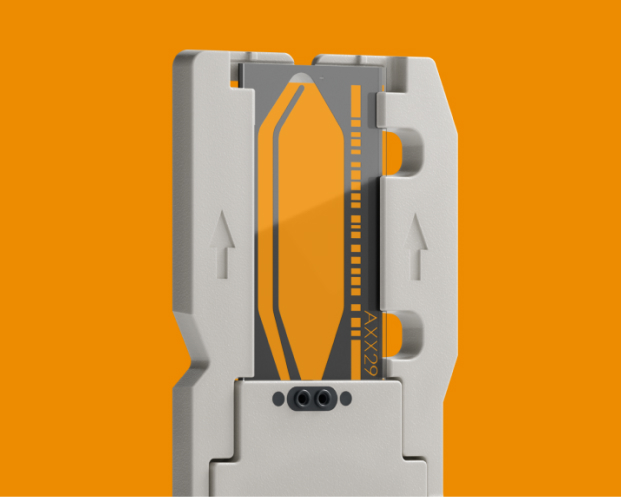
Precision immunotherapies using turmor-specific HLA ligands
Learn how researchers at Immatics are using the MiniSeq System to help identify novel immunotherapy targets.
Accessible cross-method flexibility
Transition easily between sequencing methods for DNA and RNA applications

We are making the MiniSeq Sequencing System obsolete. It will be available for order until September 30, 2025. We will continue to provide full system support and the availablity of reagents through December 31, 2029. For more information, refer to PON2025-1657. MiSeq i100 Series is the recommended alternative
Targeted DNA sequencing allows researchers to focus on a select set of genes or relevant gene regions using fixed panels of expert-selected content or custom, user-defined gene panels. By focusing the power of next-generation sequencing (NGS), targeted sequencing enables cost-effective and systematic variant detection with high accuracy and reproducibility.
A highly multiplexed polymerase chain reaction (PCR)–based workflow for use with targets ranging from a few to hundreds of genes in a single run.
DesignStudio Assay Design Tool
A web-based assay design tool to help researchers design and order custom sequencing probes or create custom genotyping array assays.
Ready-to-use reagent kits include the reagent cartridge, flow cell, and hybridization buffer for use with the MiniSeq System.
This software provides a user-friendly integrated solution for creating sequencing runs, monitoring run status, and analyzing data.
The Illumina genomics cloud-computing environment for NGS data analysis and management.
Our variant annotation and analysis software tools can help researchers extract and report biological insights from large volumes of genomic data.
The MiniSeq System sequences up to 50 small genomes per run* to provide a detailed view of the genomes of the smallest organisms. Small whole-genome sequencing (WGS) enables comprehensive analysis of microbial or viral genomes for applications in public health, infectious disease surveillance, molecular epidemiology studies, and environmental metagenomics. This approach does not require bacterial culture or labor-intensive cloning steps.
Nextera XT DNA Library Prep Kit
Rapid library prep optimized for small genomes, PCR amplicons, and plasmids, requiring as little as 1 ng of input and 15 minutes of hands-on-time.
Fast, integrated workflow for a wide range of applications, including sequencing of whole human genomes, amplicons, plasmids, and microbial genomes.
Ready-to-use reagent kits include the reagent cartridge, flow cell, and hybridization buffer for use with the MiniSeq System.
This software provides a user-friendly integrated solution for creating sequencing runs, monitoring run status, and analyzing data.
TELL-Seq Data Analysis Pipeline
Two data analysis pipelines (Tell-Read and Tell-Link) for microbial genome assembly.
Rapid alignment, variant calling, and annotation tool to quickly extract biological information from whole-genome sequences.
*Based on 5 Mb genome, 30× coverage, 2 × 150 bp read length, Nextera XT Library Prep Kit, and MiniSeq Reagent High Output 300-cycle kit.
Targeted RNA sequencing (RNA-Seq) using the MiniSeq System enables gene expression measurement of dozens to thousands of targets simultaneously.† The MiniSeq System supports user-defined panels to target genes, isoforms, splice junctions, cSNPs, and fusion genes. Predefined panels of expert-selected content target major signal transduction pathways and cellular processes. Sequence 1–384 targeted RNA samples per run.
AmpliSeq for Illumina Custom RNA Panel
Targeted, custom RNA research panels optimized for sequencing up to 1200 genomic targets of interest.
DesignStudio Assay Design Tool
A web-based assay design tool to help researchers design and order custom sequencing probes or create custom genotyping array assays.
Ready-to-use reagent kits include the reagent cartridge, flow cell, and hybridization buffer for use with the MiniSeq System.
This software provides a user-friendly integrated solution for creating sequencing runs, monitoring run status, and analyzing data.
A tool to analyze RNA samples that have been prepared using TruSeq RNA Expression Kits with sample MiniSeq Targeted RNA data available.
†Based on 65 targets, 1000× coverage, 1 × 50 bp read length, TruSeq Targeted RNA Expression custom panel kit, and MiniSeq Reagent High Output 75-cycle kit.
Resource spotlight
Learn how the MiniSeq System coupled with other Illumina solutions enabled Phosphorus to perform genomic analysis onsite at an accessible price point.
Sequence the 16S ribosomal RNA (rRNA) gene with a culture-free method to identify and compare bacteria from complex, difficult-to-study microbiomes or environments.
Enable fast, accurate characterization of novel genomes with no reference sequence available for any species.
Discover novel plant and animal SNPs and perform genotyping studies with a low-cost genetic screening method.
Assess genes with known or suspected associations with an increased hereditary risk of cancer.
Leverage NGS to detect and characterize viruses, bacteria, fungi, and parasites for research applications.
Isolate and sequence small RNA species, such as microRNA, to study the role of noncoding RNA in gene silencing and posttranscriptional regulation.
Select and sequence specific genes or genomic regions of interest using predesigned or custom designed panels for gene profiling studies.
See what’s possible with the MiniSeq System

Learn how researchers at Immatics are using the MiniSeq System to help identify novel immunotherapy targets.